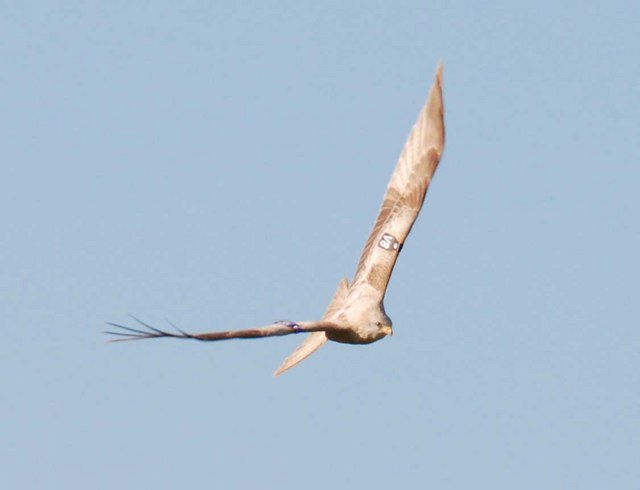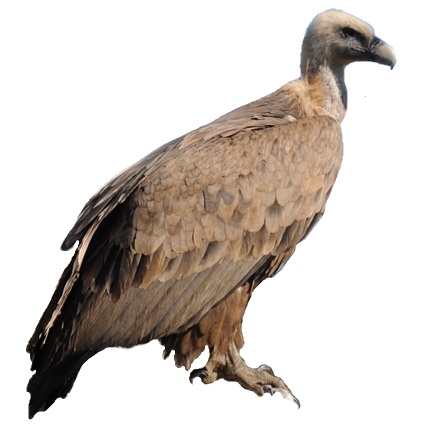|
Milvus
''Milvus'' is a genus of medium-sized birds of prey. The genus was erected by the French naturalist Bernard Germain de Lacépède in 1799 with the red kite as the type species. The name is the Latin word for the red kite. The genus ''Milvus'' has in the past been placed in the subfamily Milvinae but molecular phylogenetic studies have shown that such a grouping is polyphyletic for Buteoninae. It is now placed in the subfamily Buteoninae. Species The genus contains three species. Allozyme data indicates that the genetic diversity in both black and red kites is rather low.Schreiber, Arnd; Stubbe, Michael & Stubbe, Annegret (2000): Red kite (''Milvus milvus'') and black kite (''M. migrans''): minute genetic interspecies distance of two raptors breeding in a mixed community (Falconiformes: Accipitridae). '' Biol. J. Linn. Soc.'' 69'(3): 351–365. (HTML abstract) Successful hybridization between ''Milvus'' kites is fairly commonplace, making mtDNA analyses unreliable t ... [...More Info...] [...Related Items...] OR: [Wikipedia] [Google] [Baidu] |
Black Kite
The black kite (''Milvus migrans'') is a medium-sized bird of prey in the family Accipitridae, which also includes many other diurnal raptors. It is thought to be the world's most abundant species of Accipitridae, although some populations have experienced dramatic declines or fluctuations. Current global population estimates run up to 6.7 million individuals. Unlike others of the group, black kites are opportunistic hunters and are more likely to scavenge. They spend much time soaring and gliding in thermals in search of food. Their angled wing and distinctive forked tail make them easy to identify. They are also vociferous with a shrill whinnying call. The black kite is widely distributed through the temperate and tropical parts of Eurasia and parts of Australasia and Oceania, with the temperate region populations tending to be migratory. Several subspecies are recognized and formerly had their own English names. The European populations are small, but the South Asian popula ... [...More Info...] [...Related Items...] OR: [Wikipedia] [Google] [Baidu] |
Red Kite
The red kite (''Milvus milvus'') is a bird of prey in the family Accipitridae, which also includes many other Diurnality, diurnal Bird of prey, raptors such as eagles, buzzards, and harrier (bird), harriers. The species currently breeds only in Europe, though it formerly also bred in west Asia and northwest Africa. Historically, it was only resident in the milder parts of its range in western Europe and northwestern Africa, whereas all or most red kites in northern mainland Europe wintered to the south and west, some also reaching western Asia, but an increasing number of northern birds now remain in that region year-round. Vagrancy (biology), Vagrants have reached north to Finland and south to Israel, Libya and Gambia. Taxonomy The red kite was described by the Swedish naturalist Carl Linnaeus in 1758 in the 10th edition of Systema Naturae, 10th edition of his ''Systema Naturae'' under the Binomial nomenclature, binomial name ''Falco milvus''. The word ''milvus'' was the Latin ... [...More Info...] [...Related Items...] OR: [Wikipedia] [Google] [Baidu] |
Milvus Milvus
The red kite (''Milvus milvus'') is a bird of prey in the family Accipitridae, which also includes many other diurnal raptors such as eagles, buzzards, and harriers. The species currently breeds only in Europe, though it formerly also bred in west Asia and northwest Africa. Historically, it was only resident in the milder parts of its range in western Europe and northwestern Africa, whereas all or most red kites in northern mainland Europe wintered to the south and west, some also reaching western Asia, but an increasing number of northern birds now remain in that region year-round. Vagrants have reached north to Finland and south to Israel, Libya and Gambia. Taxonomy The red kite was described by the Swedish naturalist Carl Linnaeus in 1758 in the 10th edition of his ''Systema Naturae'' under the binomial name ''Falco milvus''. The word ''milvus'' was the Latin name for the bird. In 1799 the French naturalist Bernard Germain de Lacépède moved the species to the genus ''Mi ... [...More Info...] [...Related Items...] OR: [Wikipedia] [Google] [Baidu] |
Milvus Aegyptius
The yellow-billed kite (''Milvus aegyptius'') is the Afrotropic counterpart of the black kite (''Milvus migrans''), of which it is most often considered a subspecies. However, DNA studies suggest that the yellow-billed kite differs significantly from black kites in the Eurasian clade, and should be considered as a separate, allopatric species. Taxonomy The yellow-billed kite was formally described in 1788 by the German naturalist Johann Friedrich Gmelin in his revised and expanded edition of Carl Linnaeus's ''Systema Naturae''. He specified that the bird was found in Egypt, placed it with the eagles, falcons and relatives in the genus '' Falco'' and coined the binomial name ''Falco aegyptius''. Unusually, Gmelin did not cite a source for his information. The yellow-billed kite is now one of three kites placed in the genus ''Milvus'' that was introduced in 1799 by the French naturalist Bernard Germain de Lacépède. There are two subspecies: The yellow-billed kite was formerly ... [...More Info...] [...Related Items...] OR: [Wikipedia] [Google] [Baidu] |
Buteoninae
The Buteoninae are a subfamily of birds of prey which consists of medium to large, broad-winged species. They have large, powerful, hooked beaks for tearing flesh from their prey, strong legs, and powerful talons. They also have extremely keen eyesight to enable them to spot potential prey from a distance. This subfamily contains the buzzards (buteonine hawks) with great diversity in appearance and form and some appearing eagle-like, with at least 50 species included overall in the subfamily. At one time, several types were grouped, including large assemblages such as booted eagles, but modern studies using mitochondrial DNA clarified that this subfamily was smaller than formerly classified. Systematics The subfamily Buteoninae was introduced (as "Buteonina") by the Irish zoologist Nicholas Vigors in 1825 with '' Buteo'' as the type genus. The subfamily includes about 79 currently recognized species. Unlike the many lineages of Accipitridae which seem to have radiated out ... [...More Info...] [...Related Items...] OR: [Wikipedia] [Google] [Baidu] |
Bird Of Prey
Birds of prey or predatory birds, also known as (although not the same as) raptors, are hypercarnivorous bird species that actively predation, hunt and feed on other vertebrates (mainly mammals, reptiles and smaller birds). In addition to speed and strength, these predators have bird vision, keen eyesight for detecting prey from a distance or during flight, strong feet with sharp talon (anatomy), talons for grasping or killing prey, and powerful, curved beaks for tearing off flesh. Although predatory birds primarily hunt live prey, many species (such as fish eagles, vultures and condors) also scavenge and eat carrion. Although the term "bird of prey" could theoretically be taken to include all birds that actively hunt and eat other animals, ornithologists typically use the narrower definition followed in this page, excluding many piscivorous predators such as storks, Crane (bird), cranes, herons, gulls, skuas, penguins, and kingfishers, as well as many primarily insectivorous bir ... [...More Info...] [...Related Items...] OR: [Wikipedia] [Google] [Baidu] |
Biogeography
Biogeography is the study of the species distribution, distribution of species and ecosystems in geography, geographic space and through evolutionary history of life, geological time. Organisms and biological community (ecology), communities often vary in a regular fashion along geographic gradients of latitude, elevation, allopatric speciation, isolation and habitat species-area curve, area. Phytogeography is the branch of biogeography that studies the distribution of plants. Zoogeography is the branch that studies distribution of animals. Mycogeography is the branch that studies distribution of fungi, such as mushrooms. Knowledge of spatial variation in the numbers and types of organisms is as vital to us today as it was to our early human ancestors, as we adapt to heterogeneous but geographically predictable Natural environment, environments. Biogeography is an integrative field of inquiry that unites concepts and information from ecology, evolutionary biology, taxonomy (bio ... [...More Info...] [...Related Items...] OR: [Wikipedia] [Google] [Baidu] |
Correlation
In statistics, correlation or dependence is any statistical relationship, whether causal or not, between two random variables or bivariate data. Although in the broadest sense, "correlation" may indicate any type of association, in statistics it usually refers to the degree to which a pair of variables are '' linearly'' related. Familiar examples of dependent phenomena include the correlation between the height of parents and their offspring, and the correlation between the price of a good and the quantity the consumers are willing to purchase, as it is depicted in the demand curve. Correlations are useful because they can indicate a predictive relationship that can be exploited in practice. For example, an electrical utility may produce less power on a mild day based on the correlation between electricity demand and weather. In this example, there is a causal relationship, because extreme weather causes people to use more electricity for heating or cooling. However, in g ... [...More Info...] [...Related Items...] OR: [Wikipedia] [Google] [Baidu] |
Phylogeny
A phylogenetic tree or phylogeny is a graphical representation which shows the evolutionary history between a set of species or Taxon, taxa during a specific time.Felsenstein J. (2004). ''Inferring Phylogenies'' Sinauer Associates: Sunderland, MA. In other words, it is a branching diagram or a tree (graph theory), tree showing the evolutionary relationships among various biological species or other entities based upon similarities and differences in their physical or genetic characteristics. In evolutionary biology, all life on Earth is theoretically part of a single phylogenetic tree, indicating common ancestry. Phylogenetics is the study of phylogenetic trees. The main challenge is to find a phylogenetic tree representing optimal evolutionary ancestry between a set of species or taxa. computational phylogenetics, Computational phylogenetics (also phylogeny inference) focuses on the algorithms involved in finding optimal phylogenetic tree in the phylogenetic landscape. Phylogene ... [...More Info...] [...Related Items...] OR: [Wikipedia] [Google] [Baidu] |
MtDNA
Mitochondrial DNA (mtDNA and mDNA) is the DNA located in the mitochondria organelles in a eukaryotic cell that converts chemical energy from food into adenosine triphosphate (ATP). Mitochondrial DNA is a small portion of the DNA contained in a eukaryotic cell; most of the DNA is in the cell nucleus, and, in plants and algae, the DNA also is found in plastids, such as chloroplasts. Mitochondrial DNA is responsible for coding of 13 essential subunits of the complex oxidative phosphorylation (OXPHOS) system which has a role in cellular energy conversion. Human mitochondrial DNA was the first significant part of the human genome to be sequenced. This sequencing revealed that human mtDNA has 16,569 base pairs and encodes 13 proteins. As in other vertebrates, the human mitochondrial genetic code differs slightly from nuclear DNA. Since animal mtDNA evolves faster than nuclear genetic markers, it represents a mainstay of phylogenetics and evolutionary biology. It also permits tra ... [...More Info...] [...Related Items...] OR: [Wikipedia] [Google] [Baidu] |







